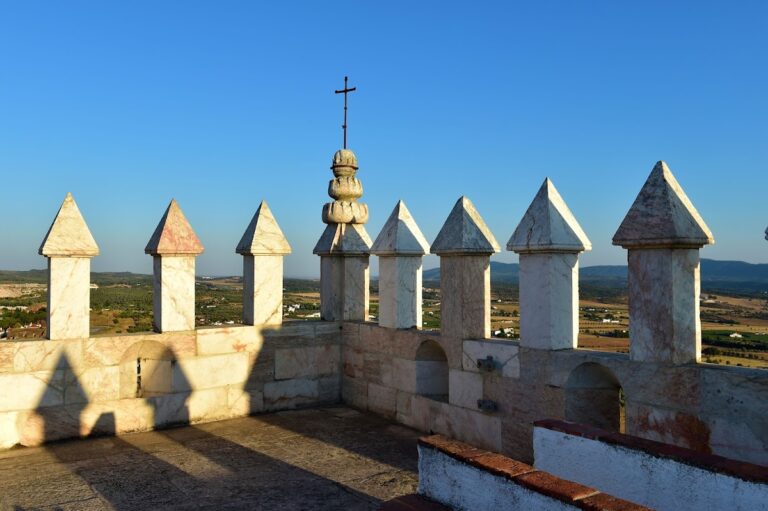Castelo de Veiros: A Historic Fortress in Estremoz, Portugal
Visitor Information
Google Rating: 3.9
Popularity: Low
Google Maps: View on Google Maps
Country: Portugal
Civilization: Unclassified
Remains: Military
History
Castelo de Veiros is located in the municipality of Estremoz, Portugal. The site has roots dating back to Roman times, suggested by the ancient name “Valerius,” indicating early settlement and occupation by the Romans.
During the Christian Reconquista, forces of King Afonso II captured the settlement in 1217 and granted it to the Knights of the Order of Avis. Under their leadership, particularly Master Fernão Anes, the castle and town became part of a network of fortifications. The precise founding date of Castelo de Veiros is unclear, but it was built around the same period as nearby castles such as Alandroal and Noudar, also constructed by the Order of Avis. By 1299, Martim Fernandes, the sixth Master of the Order, acted as the Commander of Veiros, showing the site’s continued strategic role.
Significant construction took place in the early 14th century. On May 20, 1308, the keep tower’s work began during King Dinis’s reign, led on the Order’s side by the eighth Master, Lourenço Afonso, with Pero Abrolho as the master builder. This development is recorded in inscriptions that pay tribute to both the monarch and queen, highlighting royal support for the fortress.
The castle is notable as the birthplace of Afonso, the 8th Count of Barcelos and the first Duke of Braganza, who was born around 1377 or 1380. He was the illegitimate son of the Master of Avis and Inês Pires Esteves, linking the site to the noble lineage that would shape Portuguese history.
In 1381, the settlement and castle came under attack by forces from Castile during King Fernando’s rule, reflecting the turbulent border conflicts of the period.
The 1531 earthquake damaged the structure significantly, necessitating repairs carried out under King João III’s reign. Later, during the Portuguese Restoration War in the 17th century, the castle was again involved in conflict. In 1662, troops led by Don John of Austria attacked, causing the keep tower—then used as a powder magazine—to explode. By 1665, forces under the Marquis of Caracena reoccupied the fortress. The War Council of King Afonso VI ordered defensive upgrades, including replacing medieval battlements with a new parapet to strengthen the castle’s defenses.
Administratively, Veiros served as a municipal seat until 1855 and was later annexed to Estremoz in 1895. The castle underwent restoration efforts in 1939 and was officially designated as a Property of Public Interest in 1957. A further restoration project led by the Estremoz City Council took place between 1998 and 2000, focusing on rural development and preservation of the site.
Remains
Castelo de Veiros stands prominently on a steep hill and follows a trapezoidal layout, a shape that allowed for effective defense adapted to the terrain. Its walls are primarily built with a combination of schist and granite stones, materials commonly used in local medieval fortifications for their durability. Secondary structures incorporate marble masonry, indicating a refinement in construction techniques and possible reuse of earlier materials.
The castle’s curtain wall reaches approximately two meters in thickness and is topped by an “adarve,” which is a wall-walk or covered walkway used by defenders to patrol and defend the perimeter. Originally, nine large support buttresses known as “cubos” reinforced this wall. These structural elements would have improved the stability and defensive capabilities of the fortress.
Four gates provided access to the castle, aligning with the four cardinal points—a strategic layout enabling controlled entry from all sides. Of these, three remain intact: to the south, west, and north. The northern gateway is distinguished by its larger pointed arch, a feature that emphasizes its importance and possibly served both defensive and ceremonial functions.
While the original central keep tower no longer survives, eight towers have endured around the curtain walls. Six semicircular towers protect the gates to the south, west, and north, enhancing the castle’s defensive coverage. Additionally, a circular tower and a quadrangular tower stand along the northern wall, together forming a complex defensive arrangement adapted to the site’s topography.
Within the castle courtyard is a notable marble stone bearing epigraphic inscriptions dating to 1308. These carvings commemorate the beginning of the keep’s construction, referencing Master Pero Abrolho and Master Lourenço Afonso, as well as King Dinis and Queen Elizabeth. This inscription provides valuable insight into the castle’s medieval construction phase and the collaborative efforts of royalty and military orders.
The “Clock Tower,” which features a bell tower, dates from the 16th century and marks a later addition reflecting evolving architectural and community needs within the fortress. Nearby stands the Mother Church dedicated to Saint Savior. Built at the end of the 16th century, this church replaced an earlier 13th-century building, indicating the continued religious significance of the castle’s enclosure throughout the centuries.










